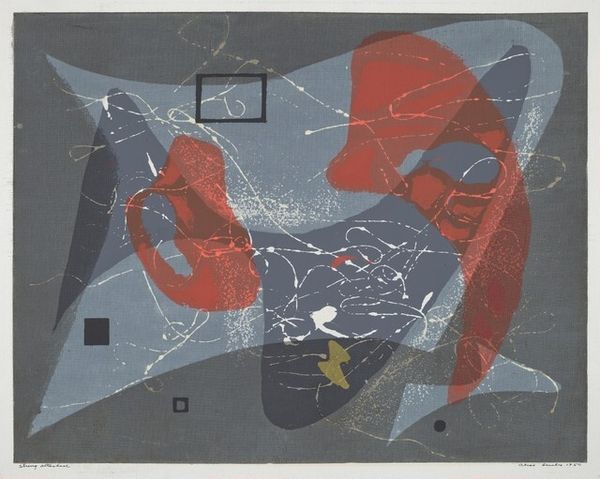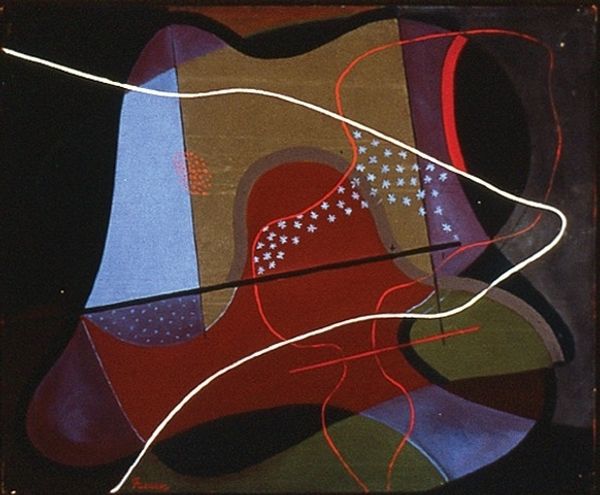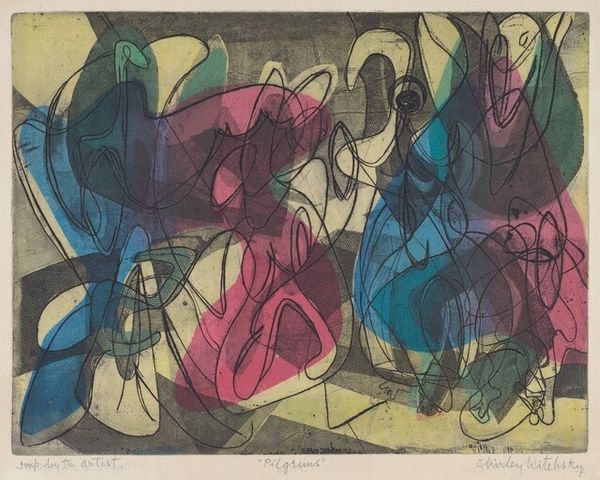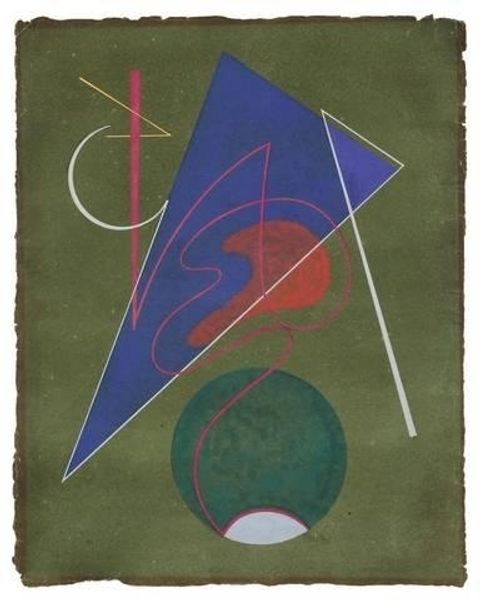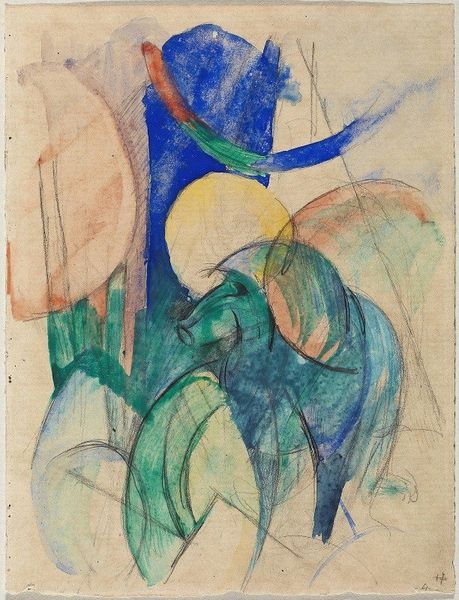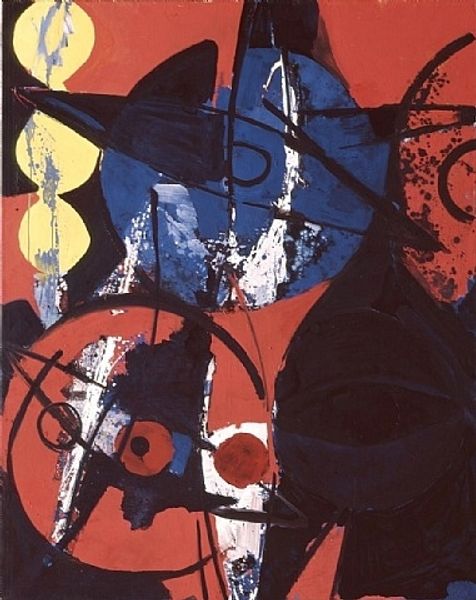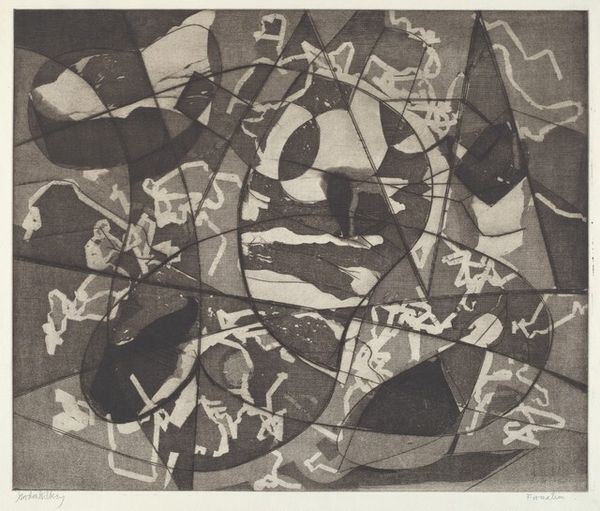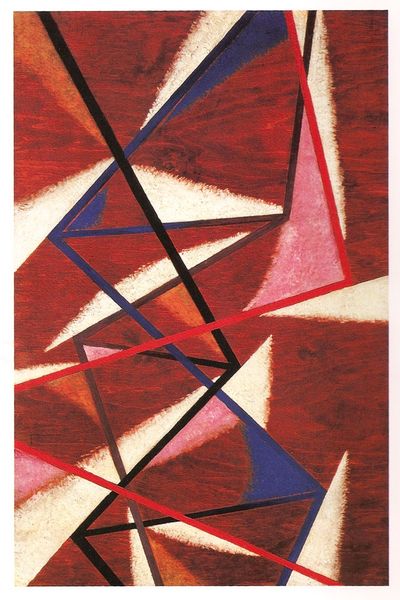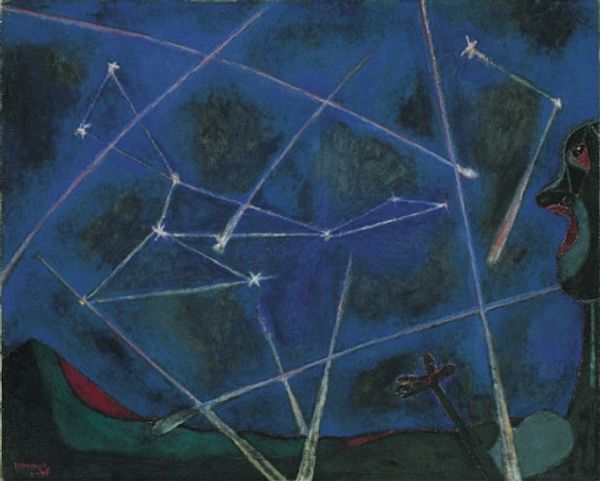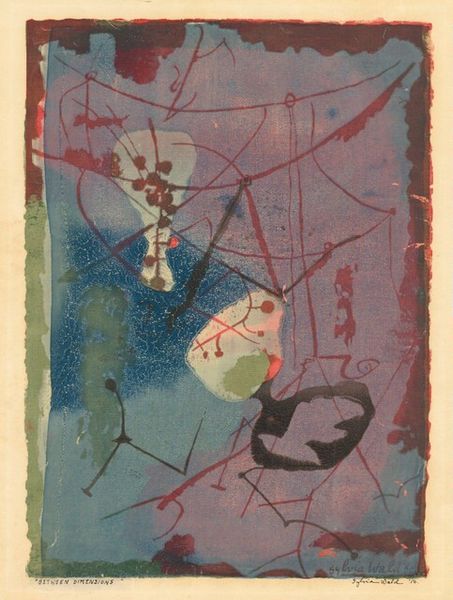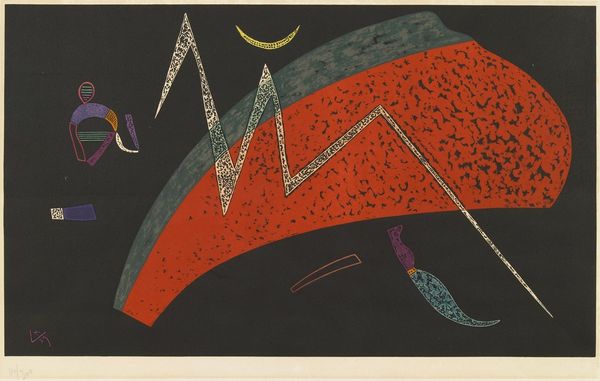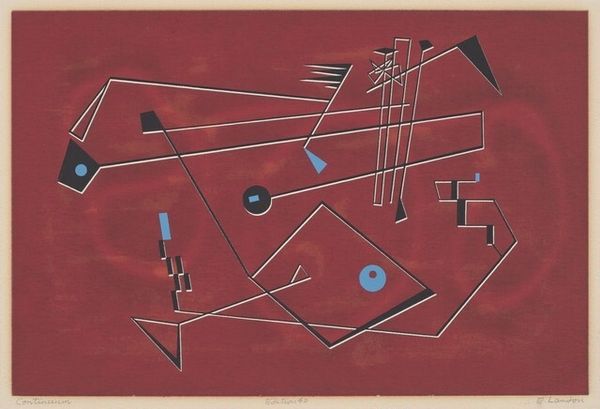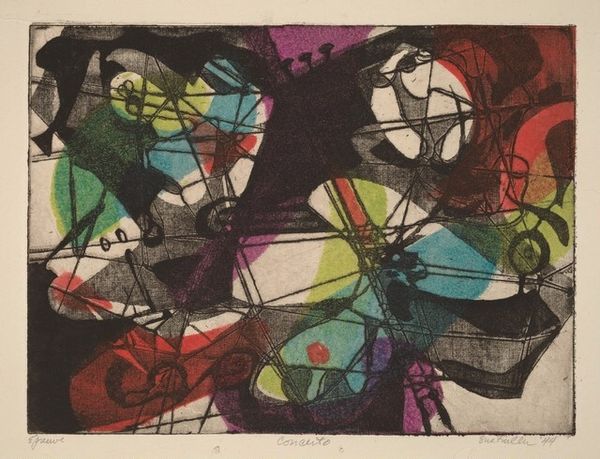
drawing
#
drawing
#
geometric
#
abstraction
#
line
#
modernism
Dimensions: sheet: 45.56 × 60.64 cm (17 15/16 × 23 7/8 in.)
Copyright: National Gallery of Art: CC0 1.0
Curator: Rudolf von Huhn’s “Colibri,” a drawing created in 1952, presents us with a compelling exploration of abstract form. What are your initial impressions? Editor: Striking, in a minimal kind of way. I see simplified, biomorphic shapes floating in an undefined dark space. The interplay between the graphic lines and textured color areas feels tense and engaging. Is the negative space part of the visual puzzle? Curator: Precisely! Von Huhn uses line and geometry as structural elements to play with perception. Notice the way the linear elements intersect with the softly gradated color fields to imply form, but ultimately resist clear figuration. Editor: Right, these aren't just floating objects; they appear manufactured. The overlaid marks are like the maker's toolpath, which gives it a raw quality, almost undone, yet also highly designed. Can we tell how this was made, what materials were employed in this process? Curator: The precise materials remain undocumented; however, the techniques speak volumes. We see precision—almost mechanical—interwoven with gestures in color, that softens geometric rigidity. The combination makes the composition far from cold. Editor: It challenges the assumption that abstraction is detached. Thinking of this work in terms of its historical context, right after the war, and in relation to technological developments, the integration of both machine and free hand seems significant. The hummingbird feels symbolic—a sort of manufactured or augmented organic entity. Curator: Indeed. We should consider this work within the scope of Modernist pursuits. Here, Von Huhn challenges viewers to negotiate relationships of figure and ground through formal visual interplay. Von Huhn emphasizes design while maintaining a visual dynamic quality, a balance he works towards in all his compositions. Editor: I find that reading this drawing within the history of technological optimism reveals an approach to redefining the figure for the machine age, when organic and mechanic come into constant conversation with one another. Curator: A wonderful observation that will resonate with many as they further observe von Huhn's “Colibri.” Editor: Thank you. This examination prompts us to reconsider where the hand begins and the machine leaves off in making sense of form in modernity.
Comments
No comments
Be the first to comment and join the conversation on the ultimate creative platform.
